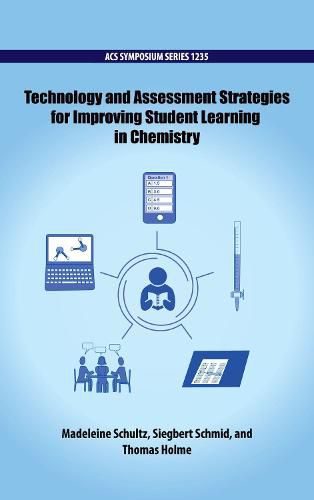Readings Newsletter
Become a Readings Member to make your shopping experience even easier.
Sign in or sign up for free!
You’re not far away from qualifying for FREE standard shipping within Australia
You’ve qualified for FREE standard shipping within Australia
The cart is loading…






Although the difficulties many students encounter when learning chemistry have been known and explored for decades, there is no consensus on how best to assist and assess their learning. Over the past ten years, the availability of a range of technological innovations that are intended to improve student learning and assessment has made the choice of teaching and assessment strategies more complex. Many teachers are rapidly adopting new technologies in teaching and assessment although their impacts have not yet been extensively studied. Many researchers have investigated the use of specific technologies in aspects of their teaching and assessment, and this book contributes to a growing body of literature that allows some generalisations to be drawn. Most importantly, specific strategies are described in detail, making it possible for others to take advantage of the learning experiences and allowing practitioners to adopt the practice best suited to their needs.General tools for chemistry education range from tailored websites (including Web 2.0 interactive features), to optimising the use of flipped classrooms, to the application of commercial packages in a coherent manner. The book focuses on these aspects of using technology directly in teaching chemistry. One area of great interest in chemistry education is the role of the teaching laboratory and how best to optimise laboratory learning. The use of short videos, animations, and best assessment practices are also covered. The chapters in the book reflect the somewhat different teaching contexts of the countries in which the authors work.
$9.00 standard shipping within Australia
FREE standard shipping within Australia for orders over $100.00
Express & International shipping calculated at checkout
Stock availability can be subject to change without notice. We recommend calling the shop or contacting our online team to check availability of low stock items. Please see our Shopping Online page for more details.
Although the difficulties many students encounter when learning chemistry have been known and explored for decades, there is no consensus on how best to assist and assess their learning. Over the past ten years, the availability of a range of technological innovations that are intended to improve student learning and assessment has made the choice of teaching and assessment strategies more complex. Many teachers are rapidly adopting new technologies in teaching and assessment although their impacts have not yet been extensively studied. Many researchers have investigated the use of specific technologies in aspects of their teaching and assessment, and this book contributes to a growing body of literature that allows some generalisations to be drawn. Most importantly, specific strategies are described in detail, making it possible for others to take advantage of the learning experiences and allowing practitioners to adopt the practice best suited to their needs.General tools for chemistry education range from tailored websites (including Web 2.0 interactive features), to optimising the use of flipped classrooms, to the application of commercial packages in a coherent manner. The book focuses on these aspects of using technology directly in teaching chemistry. One area of great interest in chemistry education is the role of the teaching laboratory and how best to optimise laboratory learning. The use of short videos, animations, and best assessment practices are also covered. The chapters in the book reflect the somewhat different teaching contexts of the countries in which the authors work.